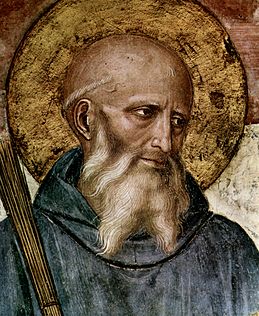529
Appearance
| Millennium: | 1st millennium |
|---|---|
| Centuries: | |
| Decades: | |
| Years: |
| 529 by topic |
|---|
| Leaders |
| Categories |
| Gregorian calendar | 529 DXXIX |
| Ab urbe condita | 1282 |
| Assyrian calendar | 5279 |
| Balinese saka calendar | 450–451 |
| Bengali calendar | −65 – −64 |
| Berber calendar | 1479 |
| Buddhist calendar | 1073 |
| Burmese calendar | −109 |
| Byzantine calendar | 6037–6038 |
| Chinese calendar | 戊申年 (Earth Monkey) 3226 or 3019 — to — 己酉年 (Earth Rooster) 3227 or 3020 |
| Coptic calendar | 245–246 |
| Discordian calendar | 1695 |
| Ethiopian calendar | 521–522 |
| Hebrew calendar | 4289–4290 |
| Hindu calendars | |
| - Vikram Samvat | 585–586 |
| - Shaka Samvat | 450–451 |
| - Kali Yuga | 3629–3630 |
| Holocene calendar | 10529 |
| Iranian calendar | 93 BP – 92 BP |
| Islamic calendar | 96 BH – 95 BH |
| Javanese calendar | 416–417 |
| Julian calendar | 529 DXXIX |
| Korean calendar | 2862 |
| Minguo calendar | 1383 before ROC 民前1383年 |
| Nanakshahi calendar | −939 |
| Seleucid era | 840/841 AG |
| Thai solar calendar | 1071–1072 |
| Tibetan calendar | 阳土猴年 (male Earth-Monkey) 655 or 274 or −498 — to — 阴土鸡年 (female Earth-Rooster) 656 or 275 or −497 |

Year 529 (DXXIX) was a common year starting on Monday of the Julian calendar. At the time, it was known as the Year of the Consulship of Decius without colleague (or, less frequently, year 1282 Ab urbe condita). The denomination 529 for this year has been used since the early medieval period, when the Anno Domini calendar era became the prevalent method in Europe for naming years.
Events
[edit]By place
[edit]Byzantine Empire
[edit]- April 7 – Emperor Justinian I issues the Codex Justinianus (Code of Civil Laws), reformulating Roman law in an effort to control his unruly people (see 532).[1]
- The Samaritans revolt and are defeated; the Church of the Nativity is burnt down during the Rebellion.[2]
Europe
[edit]- Queen Amalasuntha receives a delegation sent by a council of Gothic nobles urging that she have her son Athalaric, now 13, taught an education in the Roman tradition—not by elderly schoolmasters, but by men who will teach him to "ride, fence, and to be toughened, not to be turned into a bookworm".[3]
Arabia
[edit]- Al-Harith ibn Jabalah becomes the fifth king of the Ghassanids. He helps the Byzantines to suppress the wide-scale Samaritan Revolt.[4]
Central America
[edit]- February 25 – Kʼan Joy Chitam I becomes the new ruler of the Mayan city-state of Palenque what is now the state of Chiapas in southern Mexico, ending an interregnum of a little over four years, and reigns until his death in 565.[5]
Southeast Asia
[edit]- Rudravarman is granted investiture by China, as the first king of the fourth dynasty of Champa (modern Vietnam).[6]
By topic
[edit]Education
[edit]- The Academy, originally founded at Athens by Plato around 387 BC, closes down by order of Justinian I, on charges of un-Christian activity. Many of the school's professors emigrate to Persia and Syria.[7]
Religion
[edit]- The Benedictine Order is established at Monte Cassino near Naples by Benedict of Nursia, who founds a monastery and formulates for his monks strict rules in the "Regula Benedicti".[8]
- The Canons of the Council of Orange are established, approving the Augustinian doctrine of sin and grace over Pelagianism and Semi-Pelagianism, but without Augustine's absolute predestination.[9]
Births
[edit]- Wen Xuan Di, emperor of Northern Qi (d. 559)[10]
Deaths
[edit]- Baderic, king of the Thuringii (b. c. 480)[11]
- Theodosius the Cenobiarch, monk and founder of the Monastery of St. Theodosius[12]
- Yuan Hao, imperial prince of Northern Wei[13]
References
[edit]- ^ Dingledy, Frederick W. (August 18, 2016). "The Corpus Juris Civilis: A Guide to Its History and Use". Legal Reference Services Quarterly. 35 (4). Rochester, NY: 231–255. doi:10.1080/0270319X.2016.1239484. S2CID 151474152.
- ^ Tucker, Abigail (March 2009). "Endangered Site: Church of the Nativity, Bethlehem". Smithsonian Magazine. Retrieved January 29, 2019.
- ^ Amory, Patrick (1997). People and Identity in Ostrogothic Italy, 489-554. Cambridge: Cambridge University Press. pp. 155–158. ISBN 9780521526357.
- ^ Baumstark, Anton (2011). On the Historical Development of the Liturgy. Liturgical Press. p. 117. ISBN 9780814660966.
- ^ Tiesler, Vera; Cucina, Andrea (2006). Janaab' Pakal of Palenque: Reconstructing the Life and Death of a Maya Ruler. Tucson, AZ: University of Arizona Press. p. 161. ISBN 9780816525102.
- ^ Hall, Daniel George Edward (1981) [1955]. History of South East Asia. London and Basingstoke: Macmillan International Higher Education. p. 35. ISBN 9781349165216.
- ^ Blumenthal, Henry J. (1978). "529 and Its Sequel: What Happened to the Academy?". Byzantion. 48 (2): 369–385. JSTOR 44171310.
- ^ Johnston, William M.; Renkin, Claire (2000). Encyclopedia of Monasticism: A-L. Chicago: Taylor & Francis. pp. 128–143. ISBN 9781579580902.
- ^ Westerfield, David (April 28, 2006). "What Was Significant About the Council of Orange?". David Westerfield. Retrieved January 29, 2019.
- ^ Lee, Lily Xiao Hong; Stefanowska, A. D.; Wiles, Sue (2015) [2007]. Biographical Dictionary of Chinese Women: Antiquity Through Sui, 1600 B.C.E. - 618 C.E. Abingdon & New York: Routledge. p. 314. ISBN 9781317475910.
- ^ Duruy, Victor (1918). A Short History of France. J. M. Dent. p. 86.
- ^ Khoury, Bishop Demetri (2008). A Cloud of Witnesses: Saints and Martyrs from the Holy Land. Bloomington, Indiana: AuthorHouse. p. 256. ISBN 9781434394408.
- ^ Knechtges, David R.; Chang, Taiping (2014). Ancient and Early Medieval Chinese Literature (vol.3 & 4): A Reference Guide, Part Three & Four. Vol. III. Leiden, Boston: BRILL. p. 1827. ISBN 9789004271852.
